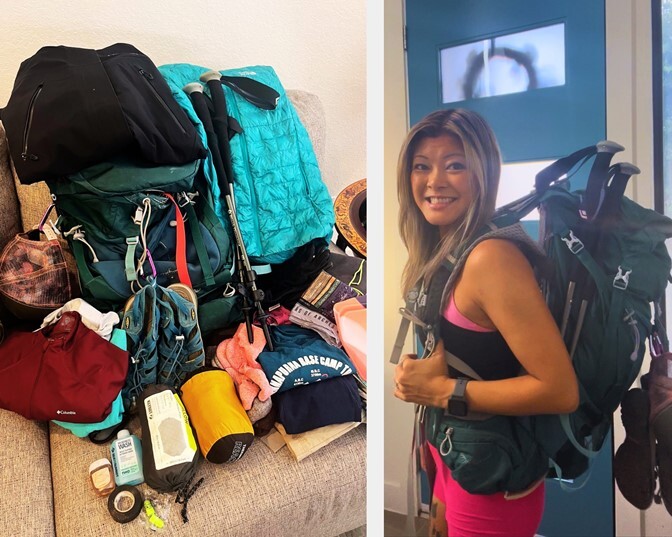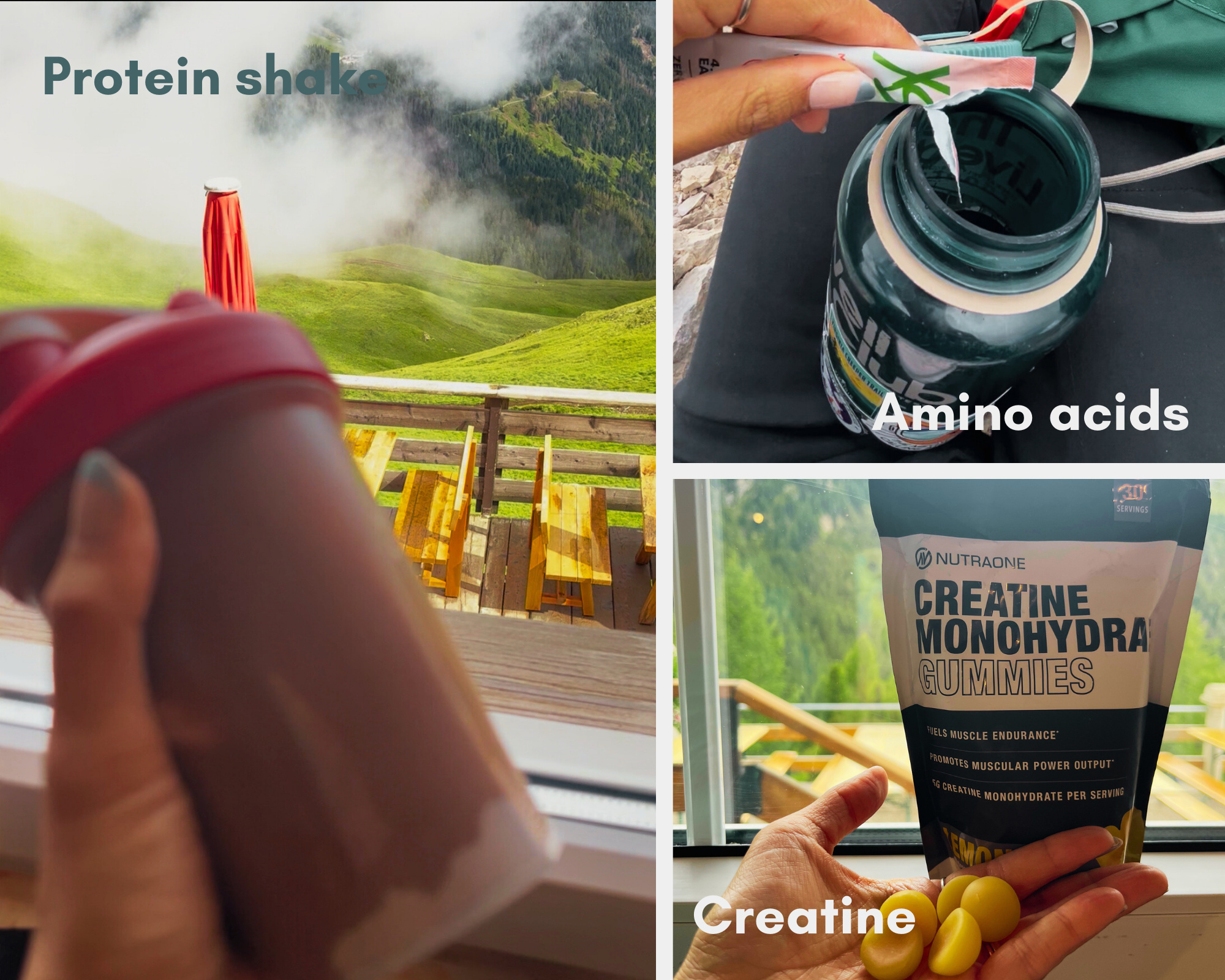
Pack confidently and lightly for a multi-day inn-to-inn trek

As I’m excitedly preparing for my 8 day trek through the Dolomites in Italy, I thought it’d be great to share my packing list. This list is very comprehensive and for a multi-day trek hiking from hut-to-hut (called rifugios in the Dolomites) and means I won’t need camping or cooking equipment. But you can still use this for your day hikes. Even without overnight camping, smart packing is the key to a successful adventure. Too much and your pack becomes a burden. Too little, and you risk discomfort. My specific brand recommendations are what I actually use and not sponsored so these are tried and tested. Good quality brands are an investment and does add up, but they are more durable and will last you so many uses.
Watch for a fun brief summary!
Clothing:
Dress like an onion—layers are your friend especially in the alpines
- Base layers – moisture-wicking, breathable
- Insulating layer – fleece or down jacket
- Shell jacket and/or raincoat – Gore-tex material will be the best at keeping you dry and insulated from the wind
- Hiking pants/shorts – weather-resistant, quick-dry, cut-off
- Light and quick-dry underwear – I love ExOficcio for travel
- Durable hiking socks
- Cozy sleep clothes – I expect the temps to drop at night
- Hat, gloves, sunglasses – weather dependent
- Hiking umbrella (optional) – different from regular umbrellas as hiking ones are lighter, have higher UV blockage, and better wind-resistant.
- Buff – to protect my neck from sun/wind and to wick sweat
- Hiking boots – this requires an entire blog on the different types but needless to say it’s important your boots are already broken-in prior to a long hike!
- Gaiters (optional for mud/snow and snakebite protection)
- Bathing suit (optional) – for lakes and hot tub opportunities
Equipment
- Day pack – for multi-day I’d recommend at least 36 liters size with a solid hip belt to keep the weight off your shoulders and internal frame for support
- Rain cover for day pack – weather dependent
- Poles (optional) — I will have a lot of daily elevation gain and descent in the Dolomites so this is a must for me
- Water bladder – I use Osprey as it’s very leak proof, has a lock for the bite valve, and has a small magnet on the drinking hose to keep it on your chest strap so the bite valve is right in front of you rather than hanging
- Water filter (optional) – if you have long hikes and sources of freshwater along the way, Lifestraws are very portable. If you have a larger group it’s worth using a gravity filter to filter more volume quickly.
- Water sterilization tablets (optional) – I won’t bring for Dolomites as there are clean water for purchase available daily
- Compact binoculars (optional)
- Duct tape/electrical tape, multitool (optional) — in case any equipment breaks/tears
Nourishment for the trail and post-hike recovery at huts:
I’m an exercise junkie and I eat clean, so this is what I also consume for hard workouts. For Dolomites, I paid for transport to move my luggage from rifugio to rifugio so I can afford the extra weight of these items in my luggage. I occasionally will stop for lunch in rifugios along the way (expect 30€ /lunch) and buy clean water (2.5-4€ / 1 L).
- Protein bars – I’m a fan of Aloha as they’re free of many allergens, have a relatively high protein and low sugar content, and taste good
- Re-usable sandwich bags – to hold sandwiches and trail snacks that I can wash out and re-use
- Protein power & blender bottle – shoot for at least 25g of protein per serving and BCAA included for recovery help although it’s more important that you actually like the taste and that it blends well with water. I’m a fan of Ascent since it’s clean and I don’t get tired of the chocolate flavor
- Kreatine (optional) – helps absorb protein better
- Amino acid supplement / electrolytes (optional) – helps with recovery. XS sticks are very portable and each are conveniently single serving
Accessories/toiletries
- Moleskin – stays on longer vs bandaids for blisters
- First aid – I won’t bring for Dolomites since the huts have full first aid
- Extra battery – huts will have limited outlets and I’ll be using GPS navigation on my phone, there are solar powered batteries I have not tried yet
- Outlet adapter (international)
- SPF including for chapstick – higher altitudes means more susceptibility to UV. I like tinted chapsticks for that extra pop of fun color on the trail
- Hand sanitizer
- Meds – melatonin to help sleep/jet lag, antihistamine for random allergies, antibiotics and ibuprofen
- Debit card / cash - Dolomite rifugios may not take credit card, I intend to draw cash from an ATM in Europe prior to the trek
Sleeping/overnight needs
Unique for the Dolomite rifugios as linens and towels may not always be available
- Sleeping bag liner – I like Sea-to-Summit Reactor since it keeps me warm at night
- Microfiber towel – more compact and quick-dry than cotton
- Inflatable pillow – I love my Klymit pillow for backpacking since it’s soft and compact
- Eco laundry wash – for washing underwear and socks
- Thin rope (optional) — for a line to dry wet clothes
- Sandals – waterproof Keens are my go-to as I can strap them onto my backpack for stream crossings and potentially for the showers in the rifugios


